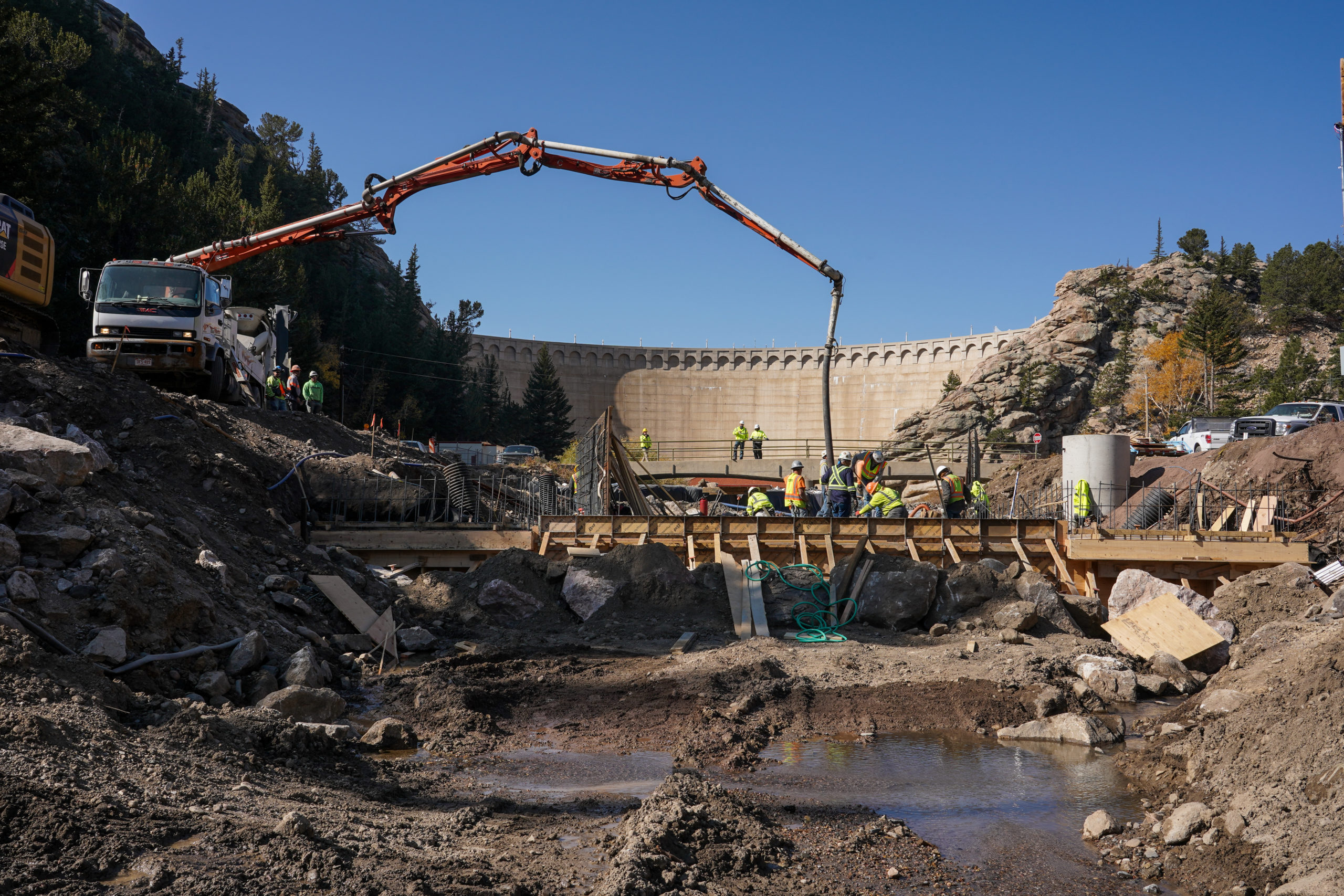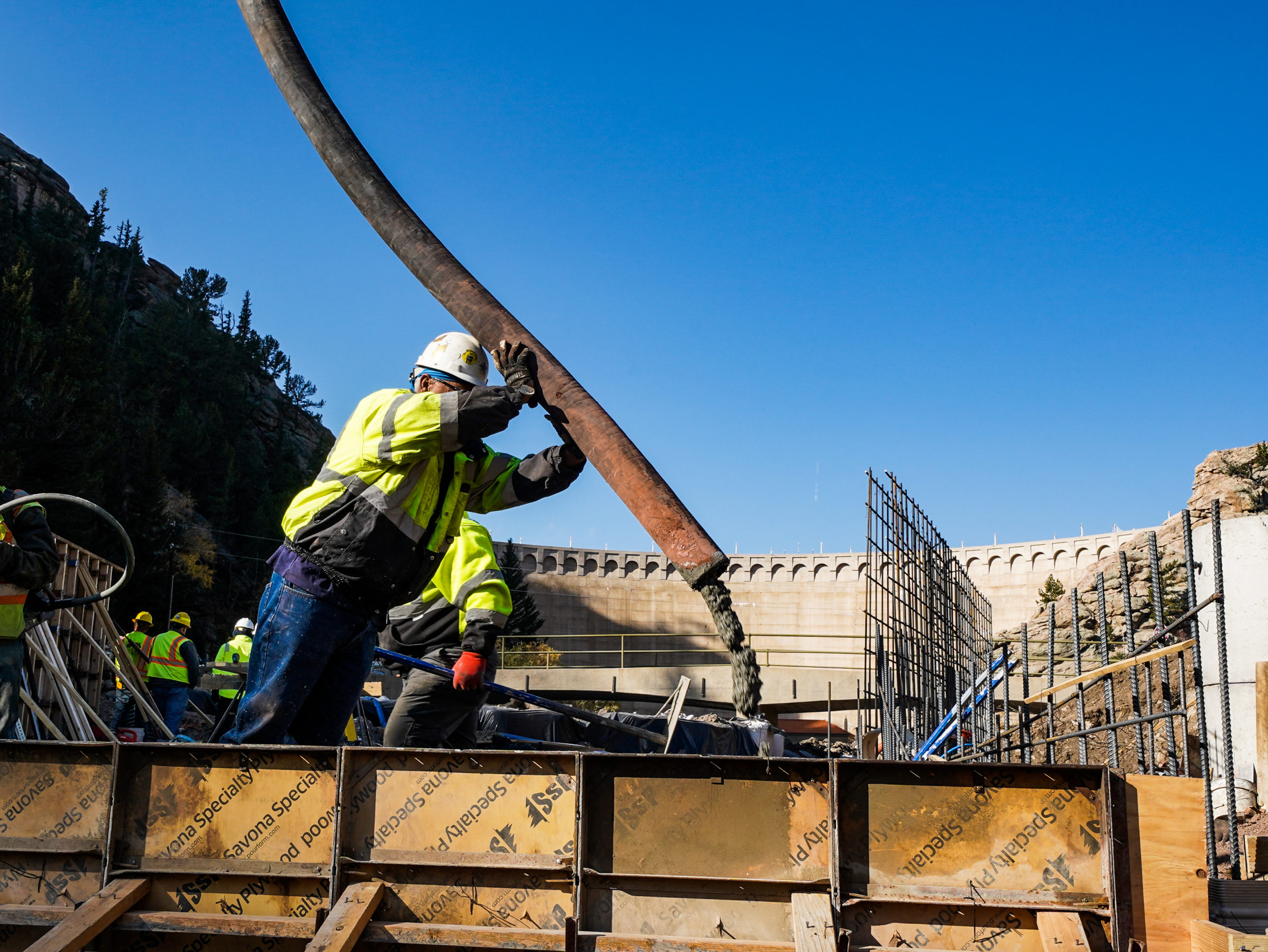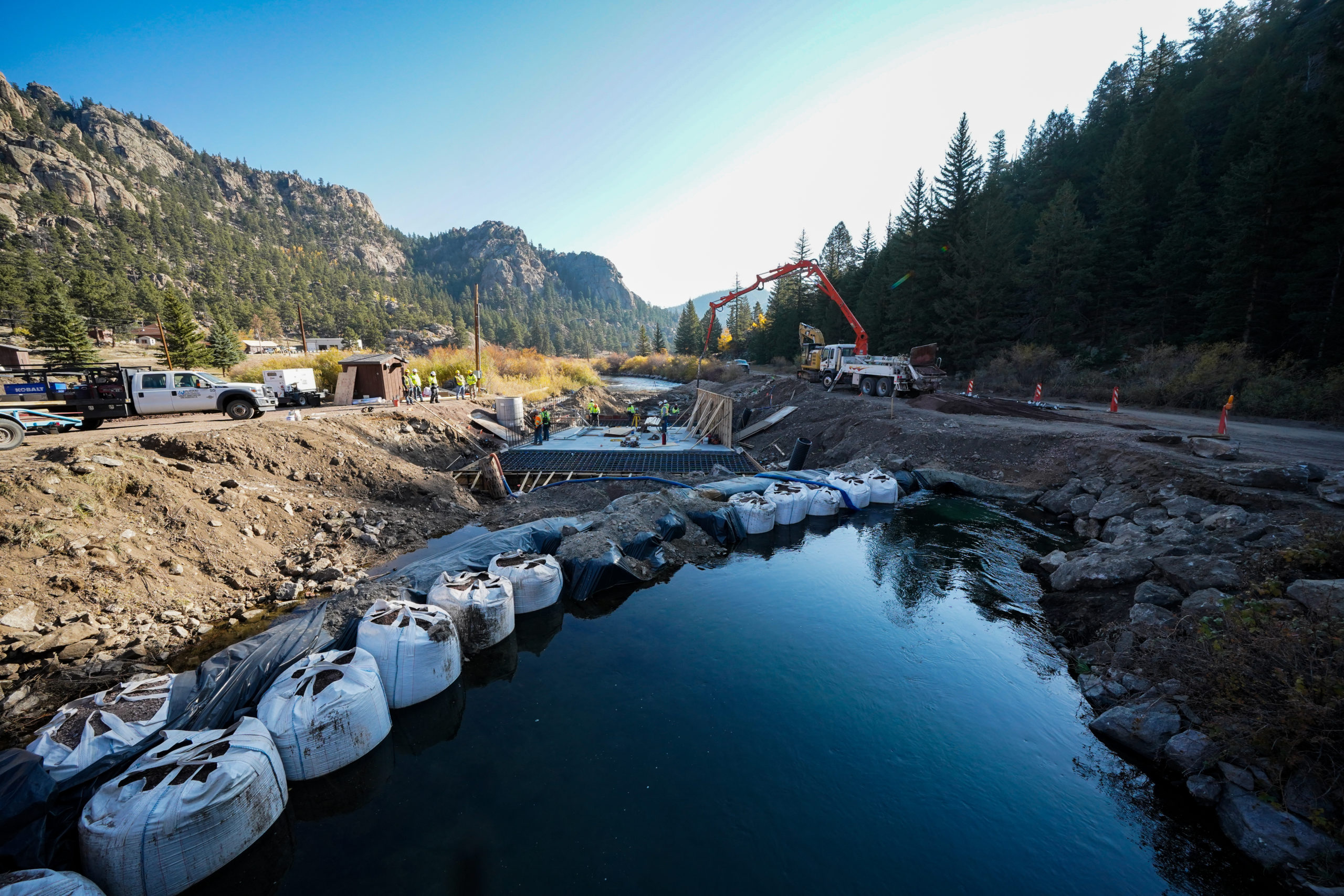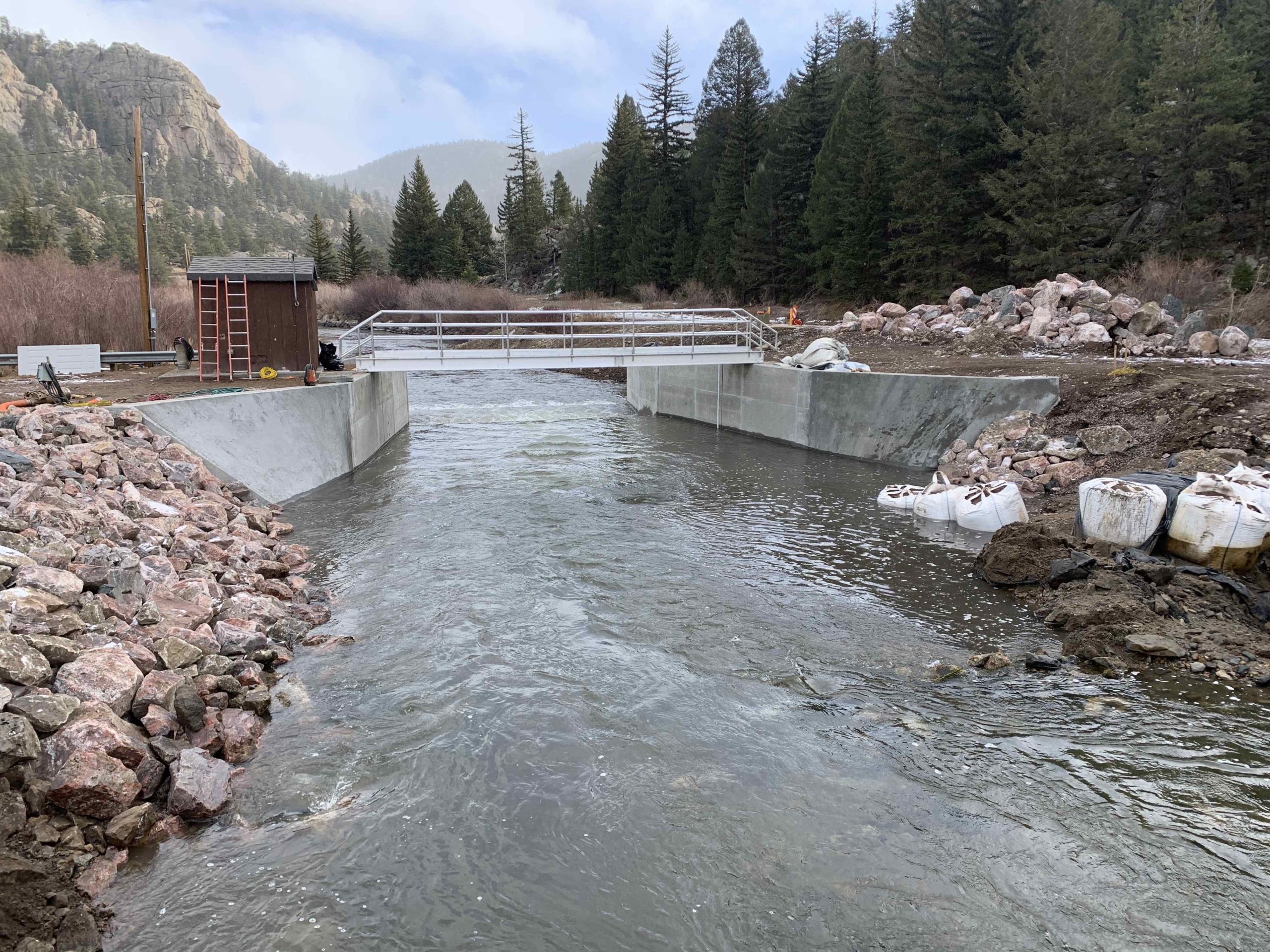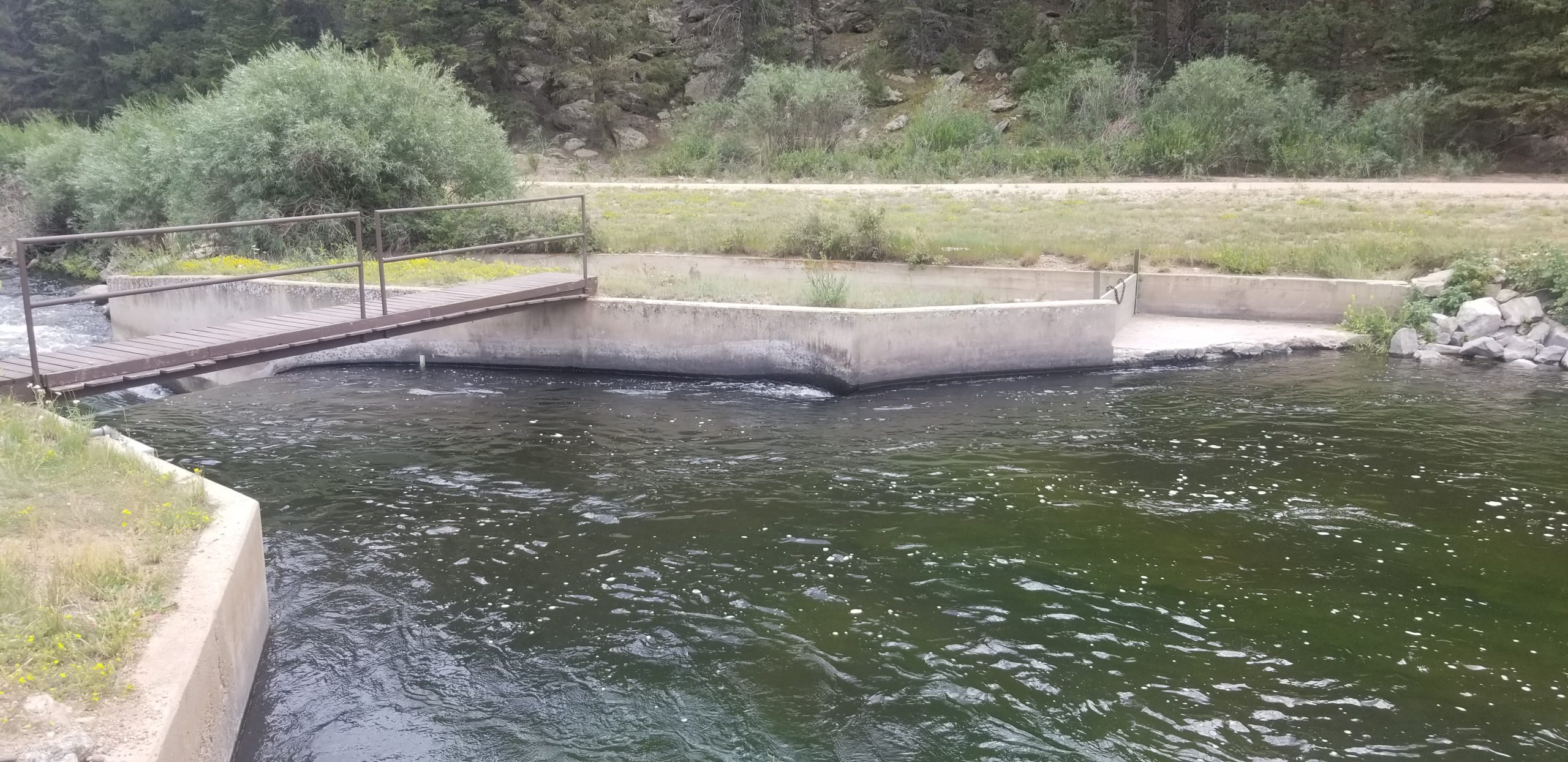
Getting ready for big river flows
Drought often dominates the Colorado water conversation.
And understandably so, with more dry years than not occurring across the state during the last two decades.
But when the big water years come — and they still will, say the experts — Denver Water wants to be ready.
That explains a challenging little construction project at the tail end of the trout fishing paradise that is Eleven Mile Canyon near Lake George in Park County, about two hours southwest of Denver.
There, near the tailwaters of the 135-foot Eleven Mile Dam, about a 10-mile drive off Highway 24, the utility is spending the fall replacing an outdated and undersized flume needed to measure the amount of water coming out of the dam on its way down the South Platte River.
Measuring the water flow is required by the Colorado Division of Water Resources and an important part of keeping track of who is using how much water and when.
In most years, the original, 15-foot-wide flume is wide enough to handle the water being released from Eleven Mile Dam. But in big, wet years, when the water can run high, Denver Water crews must scramble to send the excess flows into a side channel so those flows, too, can be measured and tracked.
It’s a fire drill that requires moving heavy equipment into the site to lift out boards and open the auxiliary channel — an operation conducted while water might be pouring over the banks, unmeasured and doing environmental damage.
It's not an abstract problem. As recently as 2015, big rains overwhelmed the existing flume and forced personnel to open the secondary channel.
And overflows like the one in 2015 don’t only impact measurements.
“You can get a lot of erosion and riverbank damage upstream and downstream of the flume,” said Sean Hansz, a senior engineer at Denver Water. “That’s bad for us because it means more maintenance. And it affects the experience of people recreating and fishing on the river.”
It doesn’t even have to be a wet year to get big flows, Hansz noted.
“It can just be the runoff. You could have a poor snow year, but if the temps go way up and everything comes screaming down the watershed, you can get a high flow roaring all the way from Antero Reservoir (the highest in Denver Water’s system on the South Platte) that goes screaming through Spinney (an Aurora Water reservoir) and then hits Eleven Mile.”
This fall’s job below Eleven Mile Dam will create an entirely new flume, converting the 15-foot-wide existing flume and its 10-foot-wide overflow channel into a single, 25-foot-wide passageway.
The work will also eliminate another problem: The overflow channel had a higher elevation than the natural flow path, which added to the challenges in high water.
“The original work was not a good overall layout; it created more damage to the river,” Hansz said.
The project created several challenges.
Denver Water worked with Colorado Parks and Wildlife to ensure fish habitat would be sustained during the low river flows required to rebuild the flume. It had to get a permit for the work through the Army Corps of Engineers, and it had to develop a plan with Aurora Water to hold extra water downstream, in Cheesman Reservoir, to account for reduced access to water from Spinney Reservoir during the project.
The arrangements for the project were part of a dizzying array of orchestrations Denver Water needed to do this summer, including shutting off Roberts Tunnel for repairs, which left water planners doing a delicate supply dance to ensure sufficient water for customers in Denver.
Trickiest of all was a four-month negotiation with the U.S. Forest Service, which manages recreation in the canyon.
The agencies had to work together to ensure a small bridge just downstream from Eleven Mile’s flume could handle the concrete trucks and other heavy equipment that needed to navigate the narrow canyon to supply the project. Compromises included bringing concrete trucks up the canyon carrying only 75% of their capacity.
The bridge issue "could have killed the project," Hansz said, but for this important work, both sides did hammer out a solution.
When completed by mid-November, the rebuilt flume will be able to handle water flowing at up to 1,400 cubic feet per second, the ceiling for the highest flows ever recorded in that stretch of the river.
By comparison, Denver Water is required, through the South Platte Protection Plan, to release a minimum flow of 32 cubic feet per second below Eleven Mile Dam. Typically, the dam releases significantly more water than that.
“This was worn-out infrastructure and it was important to replace it,” Hansz said. “Denver Water focuses a lot of resiliency, and the need to be ready for the more extreme events — dry or wet — that we foresee with climate shifts. This project is a great example, where we are trying to position ourselves and be better prepared. Big water has hit that stretch in the past, and it will come again.”


